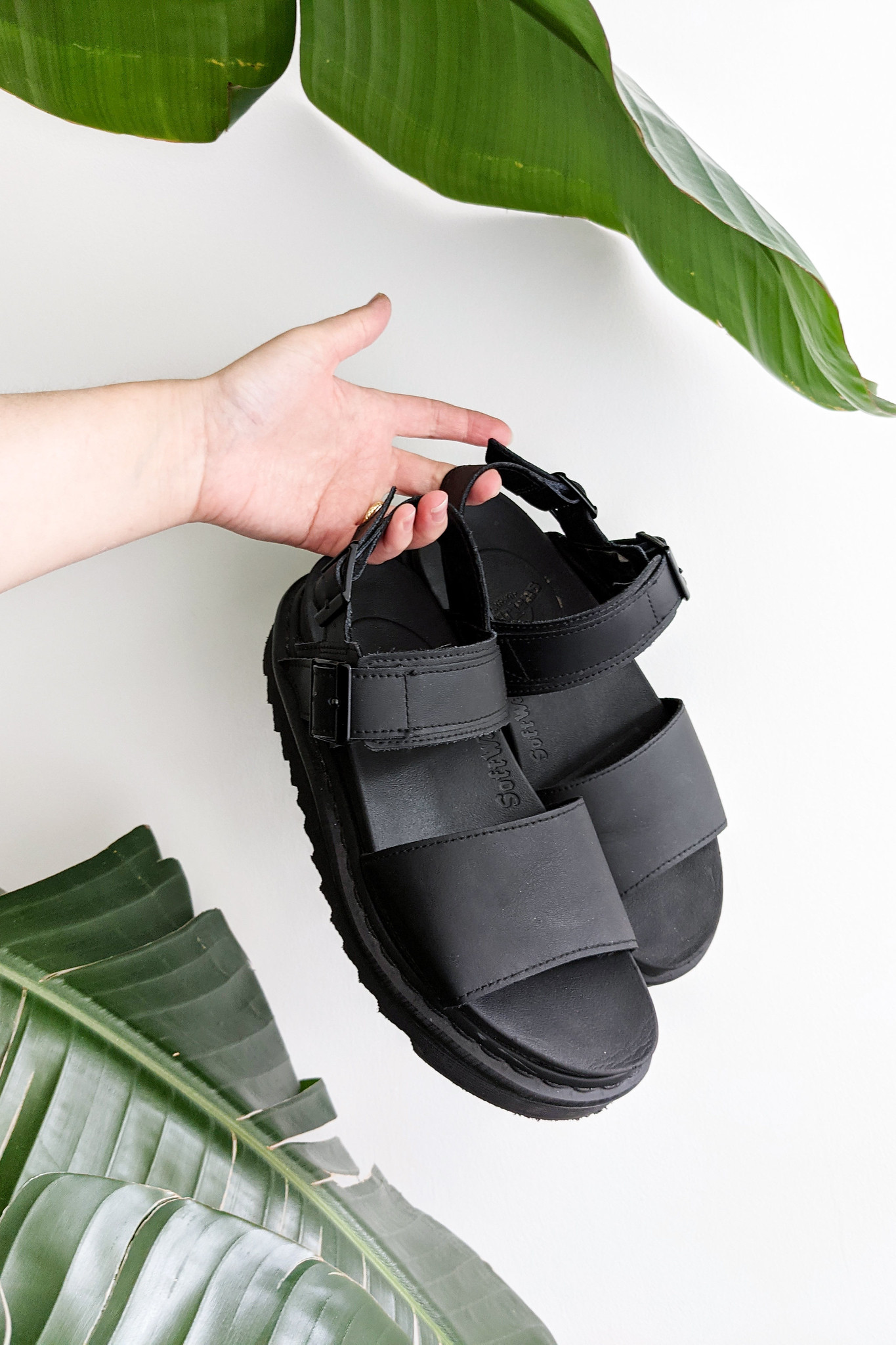
Dr. Martens are known for being sturdy, reliable shoes that are both stylish and practical. They're also known for being brutal to break in.. But it doesn't have to be that way!
Although the first few wears can be tough, knowing the tips and tricks for breaking in Dr.Martens makes the process much easier and less painful. Dr.Martens can take anywhere between 3-6 weeks to full break-in - although I managed it in less than a week!
I wear the Dr.Martens vegan 1461 shoes. They were (and still are) my go-to shoes that I wear every day. My first pair lasted through 10 years of heavy wear, so I can attest to the durability of the vegan Dr.Martens range.
Everyone's got their own approach to breaking in new shoes. This is mine. These are my tips for successfully breaking in Dr. Marten's quickly and painlessly.

Get the right fit
The Dr.Martens website provides some guidance when choosing shoes. If you typically take a half size, the website recommends sizing down as they don't offer half sizes.
The shoes should fit snug and somewhat tight, perhaps even a little uncomfortable, especially when they're brand new. But the shoes shouldn't ever pinch or otherwise feel painful to wear.
If the shoes feel painful or particularly tight in the width, they're too small and you need to size up. Although Dr.Martens shoes do soften with wear, the width is the hardest part of the shoe to stretch out. It's unlikely the shoes will ever feel comfortable. Return for a larger size!
Tie the laces tight
Loose laces will cause the shoes to move around, resulting in a lot more discomfort. Making sure the laces are tied up tight will not only prevent excess movement and rubbing, it will encourage the shoe to mould to your foot much quicker. The aim is to soften the shoes around the foot so they feel comfy to wear.
Put on padded socks
Wearing thick socks is often recommended when breaking in a new pair of Dr.Martens. But thick, cushioned socks are more important for protecting the heel, ankle and arch. Cushioned socks provide a comfy barrier that stops rubbing, helping to reduce pressure and prevent blisters.
Dr.Martens sell their own socks with extra padding. Although I prefer the Fruit of the Loom work socks, which are just as good but cheaper. Silicone heel protectors are another option and can be paired with socks for extra comfort.
Apply plasters
It's almost guaranteed that new shoes are going to rub and cause blisters or sores. This makes the shoes painful rather than uncomfortable, and is likely to put you off breaking them in.
To reduce the chances of the shoes rubbing, apply plasters and heel pads-before the shoes start to hurt! Bandages will provide a barrier to protect the feet from damage. They'll make wearing the shoes less painful and more comfortable to break in.
Wear them often
It's a bad idea to wear new shoes all day for the first time. But don't put off wearing them either. If you don't wear them, they won't break in. If you don't break them in, you won't wear them. So: wear new shoes as often as possible.
Start by wearing the shoes for a few hours every day, even if it's just inside the house. Once the shoes have loosened up and have stopped feeling so tight, start wearing them more frequently. The more often your wear your new shoes, the quicker they'll break in.
Stretch them out
When you're not wearing your shoes, help stretch them out by filling them with padding. Damp, scrunched up newspaper works well. Stuff each shoe until it's full and slightly bulging. The newspaper will expand as it dries, gently stretching the shoe. Dubbin can also be applied to soften and protect.
If you realise you've bought the wrong shoe size but left it too late to make a return; a shoe stretcher might give you the extra space you need. But don't use one if you don't have to!
Pin This Post

